How is the road to innovation in health management model going?
On December 18th, the “2018 Future Medical 100†forum hosted by the Arterial Network, Eggshell Research Institute, and Future Medical College, Junlian Capital, BV Baidu Ventures, KPMG China, and Health Zhigu was held in Beijing R&F Renaissance The grand opening of the hotel. This is the annual brand event hosted by Arterial Network. The innovative medical institutions and guests actively cooperated with more than 2,500 guests.
The conference set up a parallel forum on innovation in health management models, from medical devices, mental health, Chinese medicine conditioning, medical nutrition, community health management, and many other key members of the investment community to explore innovative ideas for health management models from different perspectives.
In 2016, a paper "Health China 2030" Planning Outline ignited China's health management; in 2017, the head enterprises received large amounts of financing, and technology giants, real estate, insurance and other powerful people cross-border food; in 2018, Health management is not as popular as the previous two years. The health management management market, the entry point of innovative business models, is still in the early stages, and the profit model is still being explored.
What are the feasible ways to realize health management? Which companies are the darlings of capital? What are the new scenarios for technology in the field of health management? The Forum on Health Management Model Innovation will focus on these issues and conduct in-depth discussions.
The participating guests and topics of the sub-forum are:
Guan Yan, Secretary General of the Wisdom and Mobile Medical Branch of China Medical Device Industry Association
Keynote Speech: The Status Quo and Development Trend of Medical Devices in the Health Management Industry
Wonderful Health CEO Kong Fei
Keynote Speech: Unhealthy Dictionary in 2018
Ji Ling Pangu founder and CEO Ji Jun
Keynote speech: AI empowers mental health, how business model can help
Yisheng’s CEO Sun Jinzheng
Keynote Speech: Using Chinese Medicine to Regulate the New Model of Health Management
Chen Yuxin, founder and CEO of Yingkang Technology
Keynote Speech: Innovation and Development of Medical Nutrition Professional Services
Jia Peng, the founder of health
Keynote Speech: Model Innovation of Community Health Management Services
Zheng Yufen, CEO and Managing Partner of Yosemite Medical Fund
Keynote Speech: A New Model of Health Management
This article is organized according to the guests, there are deletions, the following is the text.
Guan Yan, Secretary General of the Wisdom and Mobile Medical Branch of China Medical Device Industry Association
[The status quo and development trend of medical devices in the health management industry]
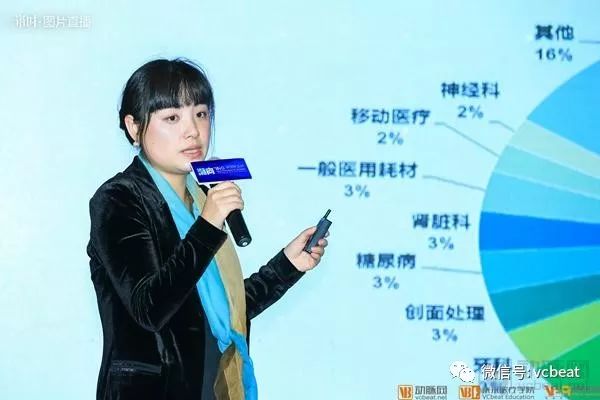
Guan Yan, Secretary General of the Wisdom and Mobile Medical Branch of China Medical Device Industry Association
At present, the total sales of medical devices worldwide has risen rapidly from 309 billion US dollars in 2009 to 317 billion US dollars in 2015, and the growth rate has exceeded the GDP growth during the same period. In 2017, the growth rate of global medical device scale was about 5.9%, and it was about 5% in 2018.
In the global medical device industry pattern, IDD has become the largest industry, and the cardiovascular field ranks second with a scale of 50 billion. Due to the slower update of imaging equipment, it is gradually diagnosed as a cardiovascular transcendence, and the leading boss has graduated to the third place. The scale is about 45 billion.
In the global medical device industry innovation, the United States, Europe, and Japan maintain a leading position in innovation speed and level, and they occupy nearly 90% of the market. In recent years, the development speed of medical device markets and industries such as China, India, Russia, and Brazil has also grown rapidly.
In terms of innovation in medical devices, the United States has the highest innovation capability. In 2016, the US innovation rate was 7.1%, and China's 3.4% was ranked 11th.
At present, the global medical device has formed a complete industrial chain, with electronics, biology and materials industries upstream, hospitals, other health industries, and family individuals. The global medical device industry is maintaining a high growth rate. Globalization, industrial services and innovation are constantly improving. The global medical device industry has entered the capital era, and the consequent regulatory pressure has increasingly become an important challenge for companies in various countries.
According to the data of the Ministry of Industry and Information Technology, from 2014 to 2016, the annual growth rate of medical devices is about 15%. In 2017, the overall output value of medical devices is about 504.9 billion yuan. From January to September 2018, medical devices have 700 billion yuan. The output value increased by 29.65%. In the next 5 to 10 years, the growth rate of medical devices may be as stable as in developed countries, maintaining around 5%-8%.
From the data point of view, medical equipment is a promising industry, but it also faces many problems: First, the marketing model has changed, medical equipment consumes a lot of gross profit in the circulation channel; second, the market focus changes from the mainstream hospital market It has become a primary medical market or even a home medical device market. Third, profits have shrunk. In the past, the gross profit of medical devices and in vitro diagnostics reached 90%, and then the net profit was 30%. Now the net profit of the entire medical device is less than 30%.
Therefore, the field of health management has become the next potential market for medical devices to be developed.
In the 1950s, the United States proposed the concept of health management. In 1969, the US federal government introduced a policy of incorporating health management into the national health care plan; in 1973, the US federal government formally adopted the Health Maintenance Act, which chartered health management organizations to set up checkpoints, restrict excessive medical services, and control rising numbers. Medical Expenditure; In 1978, the University of Michigan established the Center for Health Management Research to study lifestyle behaviors and their impact on people's health, quality of life, vitality, and health care. Currently, more than 90 million Americans are enjoying the PPO program (low medical cost health insurance plan), and 7 out of every 10 Americans enjoy health management services.
The United States divides health management into six categories: lifestyle management, needs management, disease management, catastrophic sickness services, disability management, and health management for integrated populations. In every health management category, medical device products must exist and function.
In China, due to the serious existence of population aging, chronic disease management, and the ugly and expensive problems of medical treatment, people's demand for health management is more urgent. But at the same time, the public's awareness of health management is not high. For many people, health management is only a new concept, and health management is still in its infancy in China.
At present, there are four main modes of medical health management in China. The first is the management mode of affiliated hospitals. The inherent medical equipment of the hospital cannot be distinguished from the later management of health care. Second, the health management model of community health service institutions. Medical equipment is relatively backward and cannot be matched with the health management system. Third, the professional medical examination center health management service model, equipment is relatively simple, mainly based on profit; fourth; third-party management model, belonging to non-professional health management institutions The equipment is mostly without three products, and the products are not good.
Based on the above situation, medical devices will have two major development trends in China's health management industry. The first is the global digital development trend. In 2018, the global digital medical market is 179.8 billion, and the future will reach 3.60 billion. The global medical digitalization development space huge.
However, it should be noted that the digitization of medical care is first of all the digitization of medical equipment. Digital medical equipment is the most important basic equipment in the construction of medical service system and public health system. At present, there are still some problems in digital medical equipment in China. For example, some core components mainly rely on imports, and the functional performance of the products cannot effectively meet the clinical needs. There is still a gap between the stability and reliability of the products. Therefore, digital transformation is a long process, and the medical digital transformation may be even longer.
The second trend is the development of artificial intelligence. Medical artificial intelligence currently has four key development directions: medical imaging, virtual assistants, health management, and drug development.
However, as George A., director of the Center for Translational Research and Applied Sciences at the NIH Cardiopulmonary and Blood Institute in the United States. Mensah said that there are some difficulties in artificial intelligence health management, such as: ensuring data quality, collection, harmony, processing, visualization and interoperability; using computing tools to improve data access and facilitating data analysis; Easy-to-use, intuitive devices and compatible formats; for personal care, use tools that track patient information and provide quick feedback; develop and implement privacy protection and data sharing policies; many health data, but insufficient health data analysts Relevant training and education should be strengthened.
Wonderful Health CEO Kong Fei
[2018 Unhealthy Dictionary]
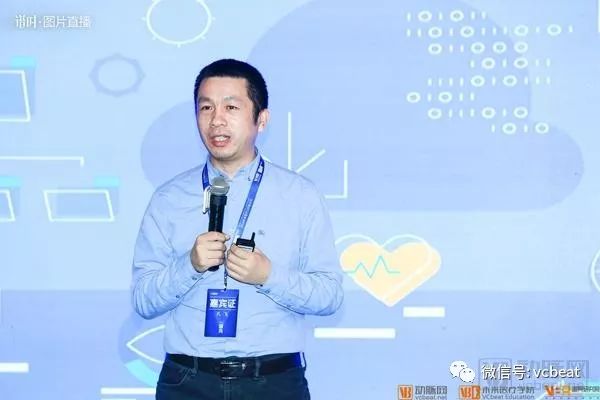
Wonderful Health CEO Kong Fei
What is health management? In fact, the most important thing in health management is the words "management" and "rationality". The management is to control and follow the requirements. The rationale is to clear the reason and explain the reasons and benefits of doing so.
Past health management is just a health education, neither "pipe" nor "reason." Diabetes patients go to the hospital, the doctor told him to take medicine on time, take control of his mouth and open his legs. However, how do patients perform the "control your mouth and open your legs" program? This program is too general, we can not call it "health management", even health education is not counted, and the wonderful health to do is true health management.
Under normal circumstances, medical treatment is a low-frequency scene, and naturally does not have Internet attributes. The logic of health management is to make health management well and turn low-frequency scenes into tools for realizing traffic. Based on this logical design, almost 1.16 million people use wonderful health products every day, generating 67.28 million M (M value refers to the Health Behavior Index).
We do health management to solve two problems:
First, turning health education into health management and using data to track health programs to play a role in health management.
Second, artificial intelligence is used to make a healthy portrait for each user, and the wisdom of the doctor is used as a library. The algorithm is matched in the middle, and different health management plans are made for each person, and finally a healthy living index is made.
According to the data from the wonderful health background, people aged 30-50 accounted for 70% of the proportion. We used data analysis to make portraits of these people and summarized several common types of people with unhealthy behaviors:
The first one is the "chair man". These people are mainly around 20-50 years old, accounting for 44% of the entire backstage crowd. Especially for young people, sedentary phenomenon is very obvious, and sedentary is an important factor causing chronic disease.
The second type is "Steady Heart". Many people wear the best mask and hold the longest night. Although these people know that staying up late is not good, they still have less than 6 hours of sleep every day.
The third type is “outside-dimensional peopleâ€, that is, the people who order take-out, in the first-tier cities such as Shanghai, Beijing, Hangzhou, etc., the take-away crowd is very large.
The fourth type is “mis-fertilizersâ€. The proportion of obesity in Tianjin ranks first, followed by Shanxi, and again in Liaoning and Hebei.
The fifth is “healthy whiteâ€. These users downloaded the wonderful health app, but never used it. After they registered, they became our lost users. Many people are not willing to learn even the most basic health knowledge.
Therefore, we hope that through the data tracked in these two years, we will analyze and refine some things that are useful for the development of the industry and for the development of health management.
At the same time, we also made a plan for regional health management and a health management program for gamification operations. People who play games are addicted, but they are not addicted to the game itself, but are addicted to the comfort and relaxation of the game. Then, we may be able to put these feelings into health management. In the next two or three years, Miao Health will make some attempts in this regard.
Ji Ling Pangu founder and CEO Ji Jun
[AI empowers mental health, how business model can help]
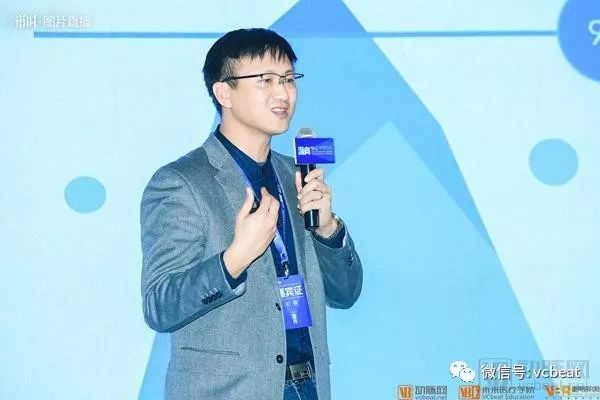
Ji Ling Pangu founder and CEO Ji Jun
As a technician, what I want to do most is to infiltrate unequal, non-inclusive resources, and medical resources are precisely non-inclusive. The mental psychology in medical resources is even more "depressed in the land". . Therefore, I hope that through the artificial intelligence technology, the expert resources used by a very small number of people will be “technicalized†and will be supplied to the group in an inclusive manner. The group here is not necessarily a patient, because the psychological problem is not only the diagnosis of the disease, it indicates that it exists.
Most people do not have neuropathy, but are at a stage of psychological problems. According to a survey conducted by the Institute of Information Science of the Chinese Academy of Sciences in 2017, only about 11% of the people are completely healthy, 89% have more or less psychological problems, and the remaining 10% are pathological, requiring management and screening. Investigation, diagnosis and intervention.
Early symptoms of psychology can be screened by AI in conjunction with a doctor. The clinician has limited communication time with each patient during the consultation time, and the AI ​​has ample time. It can cooperate with the experts to communicate with the patient. The AI ​​gives the pre-diagnosis results through the knowledge map data analysis. More accurate diagnosis results can be made.
In daily life, many people have some physical symptoms that cannot be solved medically, such as back pain or neck pain, go to the hospital for examination, and no problems are found. This is not the level of doctors, but the extent to which these symptoms do not reach the disease. This group of people has about 100 million outpatient visits per year. We hope to identify these people from the hospital and help them hang on to the department.
We work with top experts to build a closed-loop model from screening to diagnosis to intervention through machines. We mainly do disease screening and afterwards, our initial intention is to bring experts to everyone who needs them through technology.
In this closed-loop model, we do screening first, and there are many application scenarios, including physical examination, physical examination, psychological screening, etc.; the diagnosis is also equipped with relevant tools, including drug intervention and non-pharmacological intervention, among which psychiatric drugs are Brain stimulation is more serious, and non-pharmacological interventions are divided into multiple schools, such as psychological counseling and cognitive behavioral therapy. Cognitive behavioral therapy can be programmed, and we can change the patient's behavior through CPT traceability.
From diagnosis to intervention, the technology we use is mainly deep learning natural language processing. The scene has a system for physical examination and early warning. The AI ​​chats with the patient to check the patient's physical condition. The knowledge map assists us in screening and intervention. Experts continuously label the system, and the system extracts relevant knowledge into the machine through the algorithm, and finally forms the application model of “mechanism + dataâ€.
Yisheng’s CEO Sun Jinzheng
[Using TCM conditioning architecture health management new model]

Yisheng’s CEO Sun Jinzheng
Health management is a truly long-term human health care service, including sub-health conditioning, health screening, health management, medical services, etc. Forming a complete chain is what health management really needs to do.
Health management really needs to work hard outside the disease, so in the future, health management is a service that is close to people's daily lives, more convenient to obtain, and able to solve problems. Chinese medicine believes that "the doctor is not cured". In fact, the doctors must not only cure the disease, but also cure the disease.
What we want to do is to do health management through Chinese medicine conditioning. Chinese medicine has a very important value in health management. In addition to treating diseases, it can also help patients adjust their health.
The essential attribute of Chinese medicine is "simple, convenient, effective, and inexpensive." Jane, that is, you can solve the problem without bringing anything; it is convenient, no matter in any scene, it is easier to obtain; effect, that is, clinical effect is obvious; cheap refers to cheap, Chinese medicine conditioning can be tailored to people, save resources, ordinary people There will also be a sense of physical gain.
At present, the main pain point of the primary health care market is that medical institutions, national requirements, and residents' needs are disconnected and must be resolved through medical innovation.
So how does medical service become an entry point? First of all, we need to solve the frequency problem. It is difficult for medical services to become an entrance. We can make close contact with users through Chinese medicine conditioning, and we will access more services in the future. Secondly, Chinese medicine conditioning has a high universal market characteristics, which can cover the entire population from children to the elderly. Thirdly, Chinese medicine conditioning has the characteristics of high viscosity, and the user has high retention and strong stability.
We provide a service scene system for users through "doctor + technology", such as door service, self-built stores, community hospitals, corporate physiotherapy rooms, etc., users can conveniently obtain testing services and more medical services. If there is a large number of companies working together, the entire medical service system can build a platform with a large number of users at the front end and a large amount of data in the background to help more people get healthy by sharing users and data.
We finally hope that the Chinese medicine conditioning will be the entrance to medical services and the last mile of health management services will be opened.
Chen Yuxin, founder and CEO of Yingkang Technology
[Innovative development of medical nutrition professional services]

Chen Yuxin, founder and CEO of Yingkang Technology
Some people say that the current patient has three characteristics: more and more people, more and more chronic diseases, and the whole people are raising health. It can be seen that nutrition is both familiar and unfamiliar to the people.
Many people have misunderstandings about “nutrition†and believe that nutrition is the treatment and improvement of some nutrition-related diseases with nutrition education and prevention. But in fact, it's not.
Professional dietitians have professional doctor certificates or professional training, they are people with clinical nutrition background, and the group is people with nutrition-related diseases. The target of medical nutrition is cancer population, kidney patient group, cardiovascular population, adult obesity, pregnant women and children.
According to survey data, 57% of hospital inpatients have severe malnutrition, and some have a series of nutritional problems such as weight loss caused by chemotherapy after hospitalization. The population of medical nutrition has the following obvious characteristics: first, the base is huge; second, nutrition-related diseases are difficult to cure; third, such patients are first admitted to hospital for other diseases, after hospitalization and rehabilitation The process of treatment requires the support of medical nutrition.
Although the population base is large, medical nutrition is not good. The primary reason is the lag of policies and regulations. In 2009, China began to set up clinical nutrition in hospitals and carried out nutrition discipline construction in colleges and universities. Secondly, because the clinician's nutritional awareness is lacking, doctors in big cities are gradually raising awareness, but doctors in small cities still generally lack nutritional awareness. Third, the nutrition department started late, the foundation is weak, and there is a lack of development. Fourth, the people's nutritional awareness is low, mainly educated by the health care products market, lacking nutrition awareness.
How does Yingkang break the field of medical nutrition?
The first is 熬, 熬 means full confidence in the future of this industry; at the same time, it has to make a judgment: whether it can break out its own market barriers. The second is to think about the practice. The future scenario must be that N doctors face hundreds of millions of users. This kind of scenario needs to establish service connection and cooperation, and it is inseparable from technical support. The third is to integrate doctor resources. The fourth is to use AI and big data to ease the pressure of doctors; the fifth is open cooperation.
After two or three years in the field of mobile medical care, we firmly choose to go offline, serve doctors well, and serve patients better in the future. At the same time, we will build a professional database through a large number of clinical practices. Third, focus on meeting the nutritional needs of patients in the hospital and serving patients in the hospital.
Therefore, our business structure has three components, including software business, product business, and doctor group business.
In the software business, it meets all the needs of nutrition doctors for software and meets the core development needs of business development.
In the product business, through professional services, we will establish cooperation with all nutritional products manufacturers to meet the diverse product needs of patients.
In the business of the doctor group, we seize the core body of professional services outside the hospital and cultivate the market outside the hospital.
Medical nutrition has undergone positive changes in recent years. In 2009, construction of disciplines began. In 2016, medical nutrition has entered the stage of discipline standardization and industrialization. At the same time, relevant policies to promote the development of medical nutrition industrialization have been introduced one after another, and the nutritional awareness and departmental status of clinicians have improved. These phenomena indicate that medical nutrition is developing rapidly and the spring of medical nutrition should arrive soon.
Jia Peng, the founder of health
[Model Innovation of Community Health Management Services]
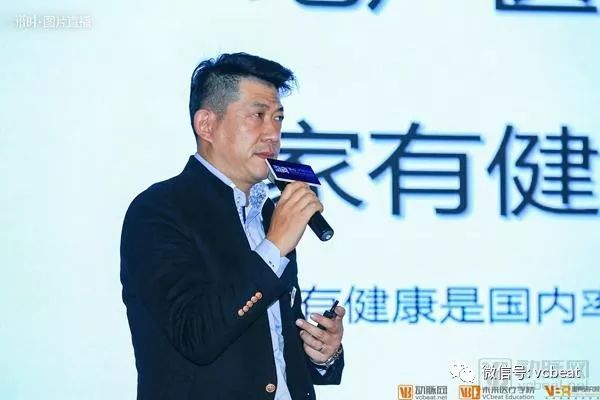
Jia Peng, the founder of health
What is the difference between real estate medical care and traditional medical care and internet medical care? Real estate medical care can not only take on the responsibility of traditional medical care, but also empower real estate developers, such as improving the property of real estate developers.
The family has a healthy choice to take the real estate medical model, mainly to do pre-hospital medical services that are not covered by the top three hospitals.
The home has a healthy profit point, first of all, to prevent disease and control diseases.
Preventing diseases is to start from the daily life of ordinary people and help them solve the small problems they encounter every day. For example, in addition to sputum and fitness, the main problem is to extend the patient's rescue time and win more time windows for 120 and 999.
This is an essential function of community medical institutions and a real demand point for ordinary people. The biggest benefit of working with a real estate developer is to save the cost and time of building trust with the people.
Secondly, the family has health from medical to medical services and has market potential.
In recent years, data shows that in 2016, the US service industry accounted for 73% of GDP, South Africa ranked second in the world, service industry accounted for 38% of GDP, and China only accounted for 14%, China's services. The industry has not yet reached the level of advanced countries. The home has health, standardized medical service management center, quality control center and other hardware, as well as medical directors, product directors and other software, is transforming from medical to medical services.
Third, reduce costs through intelligent medical care and improve service efficiency.
The family has a healthy self-developed community management HIS system, micro-diagnosis room, home robot, smart visitor car, etc., using AI to collect basic data, medical data, genetic data, exercise data, nutritional data, psychological data, lifestyle data.
Zheng Yufen, CEO and Managing Partner of Yosemite Medical Fund
[Health Management New Mode]
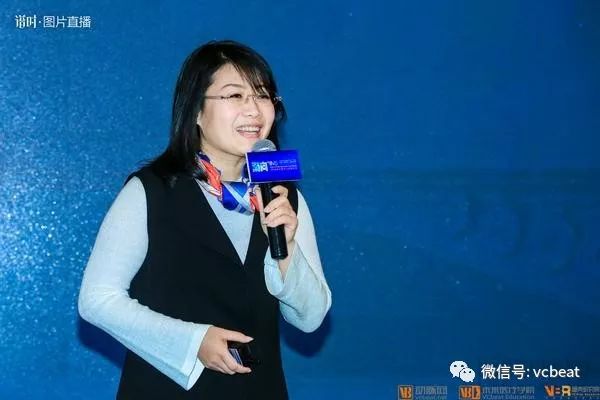
Zheng Yufen, CEO and Managing Partner of Yosemite Medical Fund
Medical treatment is nothing more than three things: grab the doctor, grab the patient, and grab the hospital. However, both doctors and patients are served and served in health care providers.
The characteristic of medical services is that production, output and consumption are carried out at the same time. Therefore, medical services are not the same as ordinary products. Medical services connect the core elements of the medical industry chain: medicines and equipment must be sold through medical services.
There are 270 million chronically ill patients in China, and there are 222 million aging population. There are also a few patients with hypertension, hyperlipidemia and diabetes. Among them, chronic disease costs account for 70% of the total medical expenses, while China's medical resources However, it is scarce, and the number of beds per thousand people is only 4.55. Whether it is from a VC perspective, a macro perspective, or a segmentation track, the health management market is large enough.
What VC needs to do is to judge whether the company has sufficient growth, whether there is a clear business model, and whether it is at a critical point, that is, everything is owed only.
Generally speaking, angel investors are more like kindergarten teachers, cultivate corporate norms, and have many resources to help enterprises; PE is like a high school teacher, before the enterprise IPO, PE will be like a high school teacher, know how to coach enterprises to get high scores, Finally, the company became famous through IPO. Therefore, corporate financing should be well matched, and investors and investment institutions of different natures should be found at different stages of development. The valuation of enterprises must also be reasonable.
If you want to raise capital or use capital development, companies must build their own core competitiveness, such as the introduction of scientists with strong scientific research capabilities, or their own unique achievements in the fields of genes, proteins, metabolism, microbes, etc. Investors.
At present, the scene of health management is changing. Homecare is very common in the United States. China also has its own characteristic model, Medical Mall. It not only has business, but the medical service industry is very convenient. When people go shopping, they can see some basic diseases. .
In the next three to five years, the direction of medical reform will be clearer. There are many large hospitals in Europe that mainly solve the problem of hospitalization. The second clinic is open to private hospitals or institutions. Whether China will do this or not is worthy of attention.
However, medical AI, risk identification virtual nurses, multi-dimensional testing, etc., are all hot areas, and currently medical AI has produced many companies with higher valuations. How to choose business models, products and services, how to establish channels, how to identify target customers, these are all VCs are very concerned about.
Digital 60m short range laser rangefinder is a laser measurement device which is supposed to replace tape measure, ruler, and other traditional length meauring tool. Laser ruler as its name, it is a electronic ruler which user laser to measure distance.
Our laser measurer has Multiply fuctions:
1. Height measure & Length measure &Distance measure
2. Area Measure
3. Volume Measure
4. Pythagorean Measure
60M Laser Measure,60M Laser Distance Measure,Laser Distance Measure Oem,60M Digitial Laser Distance Measure
Chengdu JRT Meter Technology Co., Ltd , https://www.infrareddistancesensor.com
